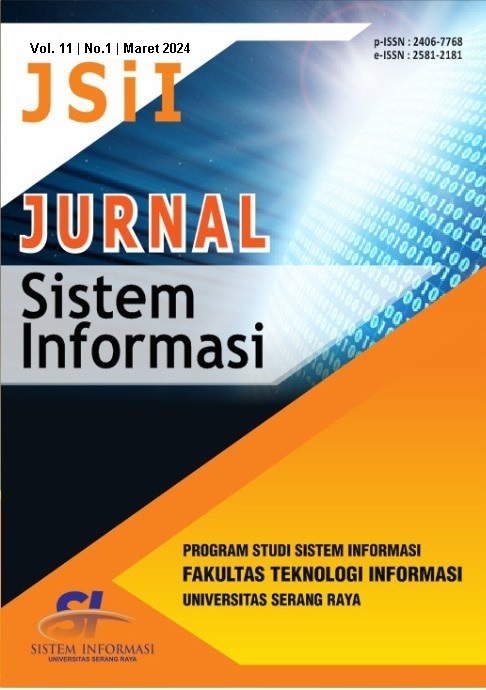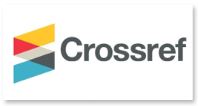FACTORS MOTIVATING STUDENTS TO CONTINUE USING YOUTUBE AS A LEARNING AID POST-COVID-19 PANDEMIC
DOI:
https://doi.org/10.30656/jsii.v11i1.8251Abstract
During the COVID-19 pandemic, the process of teaching and learning had to be conducted online, such as through Zoom meetings, due to physical meeting restrictions, including in higher education. However, this was not entirely effective due to various factors, such as individual student learning preferences. To enhance comprehension, students utilized video-sharing platforms like YouTube, which, as it turns out, was effective. Hence, this study aims to investigate what factors motivate students (both school and university students) to continue using YouTube as a learning medium post-COVID-19 pandemic. A theoretical lens of the Expectation Confirmation Model is used with the addition of external variables: Perceived Herd and Parasocial Interaction. A total of 242 respondents from both educational levels in Manokwari Regency were obtained and analyzed using Partial Least Square - Structural Equation Modelling (PLS-SEM). The study's results explain that students experience satisfaction in using YouTube, which motivates them in Manokwari to continue using it as a learning medium post-COVID-19. This satisfaction is influenced by variables such as confirmation (C), perceived usefulness (PU), and perceived herd (PH). However, the PU factor's impact on continuance usage (CU) has a t-statistic value <1.96 and a p-value >0.05, indicating it lacks significant influence. There is also a rejection of the parasocial interaction (PI) variable's influence on satisfaction (S). Furthermore, the use of control variables such as age and gender has shown significant influence on this study, with research findings indicating that age and gender significantly impact satisfaction and continuance usage.
Keywords: Control Variables, COVID-19, Expectation Confirmation Model, Parasocial Interaction, Perceived Herd, YouTube
References
Y. Pujilestari, “Dampak positif pembelajaran online dalam sistem pendidikan Indonesia pasca pandemi covid-19,†Adalah Bul. Huk. dan Keadilan, vol. 4, no. 1, 2020.
S. I. Suryaningsih, “Pemanfaatan Teknologi Pembelajaran dalam Adaptasi Pandemi Covid-19,†Kemendikbudristek.
H. A. F. Wowor and K. Y. S. Putri, “Efektivitas Komunikasi dalam Perkuliahan Online terhadap Proses Belajar pada Mahasiswa Manokwari Papua Barat,†J. Komun. Pendidik., vol. 5, no. 1, pp. 79–92, Jan. 2021, doi: 10.32585/jkp.v5i1.683.
H. Mujianto, “Pemanfaatan Youtube Sebagai Media Ajar dalam Meningkatkan Minat dan Motivasi Belajar,†J. Komun. Univ. Garut Has. Pemikir. dan Penelit., vol. 5, no. 1, pp. 135–159, 2019, doi: http://dx.doi.org/10.10358/jk.v5i1.588.g566.
M. Munir and T. Supriyatno, “Media Daring sebagai Self Directed Learning Materi PAI SD Pada Masa Pandemi Covid-19,†FIKROTUNA, vol. 11, no. 1, pp. 1348–1366, Jul. 2020, doi: 10.32806/jf.v11i01.3944.
A. Bhattacherjee, “An empirical analysis of the antecedents of electronic commerce service continuance,†Decis. Support Syst., vol. 32, no. 2, 2001, doi: 10.1016/S0167-9236(01)00111-7.
K. Sokolova and H. Kefi, “Instagram and YouTube Bloggers Promote it, Why Should I Buy? How Credibility and Parasocial Interaction Influence Purchase Intentions,†J. Retail. Consum. Serv., vol. 53, p. 101742, Mar. 2020, doi: 10.1016/j.jretconser.2019.01.011.
H. W. V. Tang, M. S. Yin, and D. B. Nelson, “The relationship between emotional intelligence and leadership practices: A cross-cultural study of academic leaders in Taiwan and the USA,†J. Manag. Psychol., vol. 25, no. 8, 2010, doi: 10.1108/02683941011089143.
M. Darwin, Metode Penelitian Pendekatan Kuantitatif. Bandung: Media Sains Indonesia, 2021.
R. Likert, “A Technique for the Measurement of Attitudes,†Arch. Psychol., vol. 22, no. 140, p. 55, 1932.
C. B. Astrachan, V. K. Patel, and G. Wanzenried, “A Comparative Study of CB-SEM and PLS-SEM for Theory Development in Family Firm Research,†J. Fam. Bus. Strateg., vol. 5, no. 1, pp. 116–128, Mar. 2014, doi: 10.1016/j.jfbs.2013.12.002.
A. M. Musyaffi, H. Khairunnisa, and D. K. Respati, Konsep Dasar Structural Equation Model-Partial Least Square (SEM-PLS) Menggunakan SmartPLS. Jakarta: Pascal Book, 2022.
J. F. J. Hair, M. Sarstedt, L. Hopkins, and V. G. Kuppelwieser, “Partial Least Squares Structural Equation Modeling (PLS-SEM),†Eur. Bus. Rev., vol. 26, no. 2, pp. 106–121, Mar. 2014, doi: 10.1108/EBR-10-2013-0128.
C. Fornell and D. F. Larcker, “Evaluating Structural Equation Models with Unobservable Variables and Measurement Error,†J. Mark. Res., vol. 18, no. 1, pp. 39–50, 1981, doi: 10.1177/002224378101800104.
C. H. Mason and W. D. Perreault, “Collinearity, Power, and Interpretation of Multiple Regression Analysis,†J. Mark. Res., vol. 28, no. 3, 1991, doi: 10.1177/002224379102800302.
S. V. Jin, “‘Celebrity 2.0 and Beyond!’ Effects of Facebook Profile Sources on Social Networking Advertising,†Comput. Human Behav., vol. 79, pp. 154–168, Feb. 2018, doi: 10.1016/j.chb.2017.10.033.
Downloads
Published
Issue
Section
License
- This work is licensed under a Creative Commons Attribution-ShareAlike 4.0 International License.
-
Author(s)' Warranties
The author warrants that the article is original, written by stated author(s), has not been published before, contains no unlawful statements, does not infringe the rights of others, is subject to copyright that is vested exclusively in the author and free of any third party rights, and that any necessary written permissions to quote from other sources have been obtained by the author(s).
- Information
- Notice about change in the copyright policy of the journal 'Jurnal Sistem Informasi (JSiI)' : "From Vol 1, onwards the copyright of the article published in the journal 'Jurnal Sistem Informasi' will be retained by the author"













.jpg)














